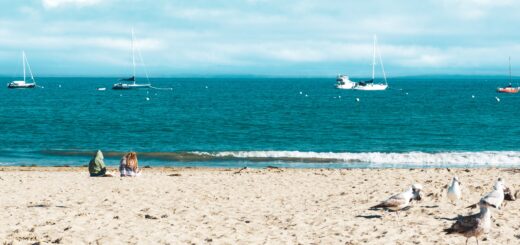2 Easy Ways to Use Art in University Science Classes
When people see my office for the first time, they often ask if I teach elementary school also. Nope, just university students right now. They ask this because the walls are covered with various pieces of art work.
My book case also has a shelf of red Solo cup windmills, clay watershed models, paper flowers, and the trappings of other 3D science-meets-art creations.
And very little of it was made by my two school age kids!
Much of the art in my office was created by environmental studies undergraduates, as well as a few teaching preparation majors. Most of these students aren’t used to “fun” activities in their classes.

My University STEM Students Love Art Projects
The first time I bring out the colored pencils, construction paper, and glue sticks I usually get weird looks and whispers. But by the end of the activity, a majority of the group are invested in their art pieces. They can show me what they know about a topic without the stress of writing another paper. For the teaching preparation students, they have an example of projects to incorporate into their own future classrooms.
I often hear things like:
“I haven’t gotten to do something creative in a long time.”
“I’m glad I came to class today.”
“I like the flexibility of the assignment.”

Possibly my favorite part of having my university STEM students do art? Some of them end up being so excited about what they made that they take their projects home to put on their refrigerator or give to a parent. And as a mom, I hope to keep getting art projects for my own refrigerator for many years to come!
Here are 2 easy art projects you can use in your own teaching spaces.
My Ultimate Forest
This activity was adapted from Joseph Cornell’s book “Sharing Nature with Children.” Students imagine that they have a plot of land to design a forest on. They can sketch in whatever plants, animals, and natural features that they want to create their “ultimate forest.” I tell my students that they can even create the weather.
I usually have my classes do this activity outside of the classroom. We find a spot in one of the campus’ gardens for a little inspiration. You can use this activity as both a pre- and post- lesson assessment, or as a fun way to review. I do this after teaching ecology basics like the water cycle, food webs, and photosynthesis.
Polar Bear Habitats
This project is geared more toward 2-4th graders, but my teaching preparation students love trying it out themselves. And it’s very easy to add more complex components for high school or college students.
Polar bears are an example of animals that are specialist species. Start by leading a short lesson on the habitat that supports polar bears. Students could also read a short story. Then ask them to draw the habitat on a large piece of sturdy paper. They can include land, ocean, ice floes, or even weather. You can hang the habitat drawings around the room and have students share a sentence or two about what they learned and drew.
In next week’s blog post, I’ll share a game that uses these habitat drawings to demonstrate the impact of climate change on polar bears!



